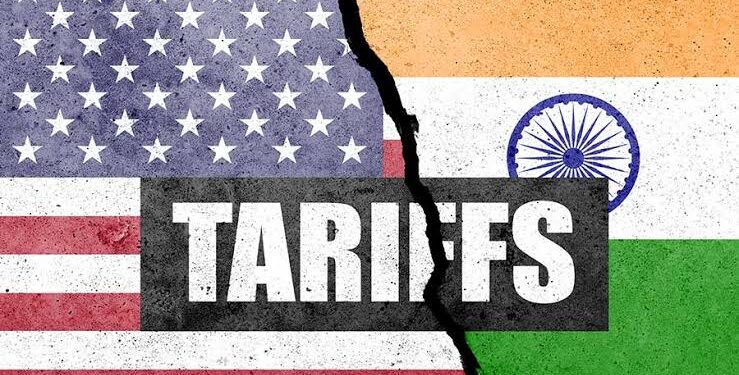United States President Donald Trump’s decision to impose steep tariffs on Indian imports officially took effect on August 7, marking a significant escalation in trade tensions between the two nations.
Last week, Trump announced a 25% reciprocal tariff on Indian goods, citing India’s “excessively high” trade barriers and its ongoing purchase of oil and military equipment from Russia. In a surprise move, Trump followed up just days later with an executive order doubling the tariffs to 50%, with the second wave of duties set to come into force on August 27.
The White House confirmed that the tariffs, which apply to a broad range of Indian exports, are part of a broader push to ensure “fair and balanced” trade relationships and penalize nations perceived to be undercutting American industries.
Trump celebrated the implementation on his platform Truth Social, writing:
“IT’S MIDNIGHT!!! BILLIONS OF DOLLARS IN TARIFFS ARE NOW FLOWING INTO THE UNITED STATES OF AMERICA!”
He further claimed that the tariffs target countries that have “taken advantage” of the U.S. for decades.
India Reacts
In India, the response was swift and concerned. Senior Congress leader and Member of Parliament Shashi Tharoor expressed deep unease about the economic fallout of the move.
“This is not good news for us. A 50% tariff makes our goods unaffordable for many consumers in the U.S.,” Tharoor said while speaking to reporters during the ongoing Monsoon Session of Parliament in New Delhi.
Tharoor warned that the steep duties could seriously damage India’s export competitiveness, especially when compared to regional trade rivals.
“When you compare us to Vietnam, Indonesia, the Philippines — even Bangladesh and Pakistan — they all enjoy lower tariffs. That puts us at a disadvantage, and U.S. importers may turn to those markets instead,” he said.
A Call for Diversification
Tharoor urged the Indian government to swiftly diversify its export markets in light of the new U.S. tariffs.
“This is a wake-up call. We already have an FTA with the United Kingdom. Talks with the European Union are ongoing. We need to aggressively pursue those and explore new trade corridors,” he said.
Despite India’s strategic neutrality on global conflicts, including its ongoing trade with Russia, the Trump administration has made it clear that economic consequences will follow policies it deems contrary to American interests.
With the initial 25% tariffs now active and the additional 25% due on August 27, Indian exporters, especially in sectors like textiles, pharmaceuticals, and automotive parts, are bracing for potential disruption.





























